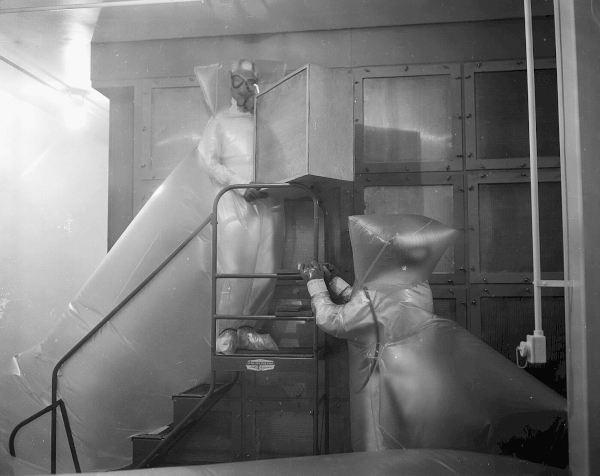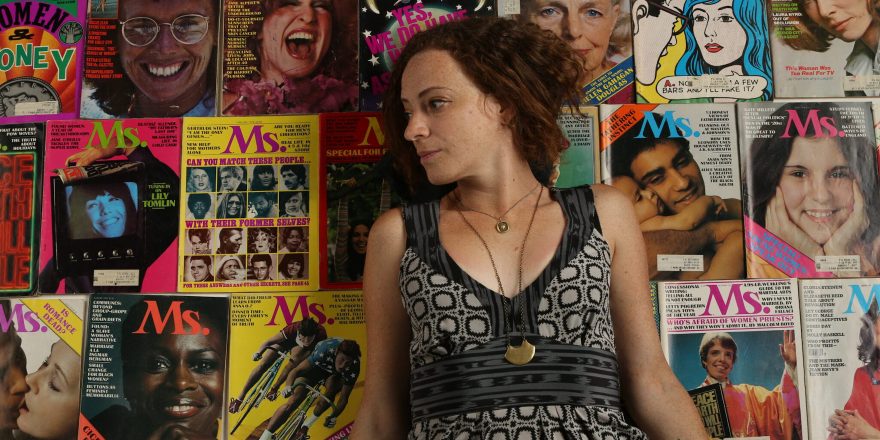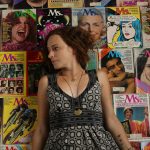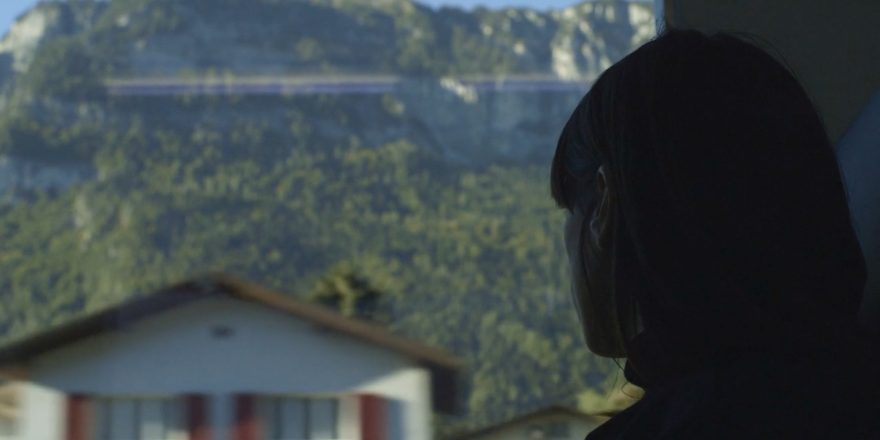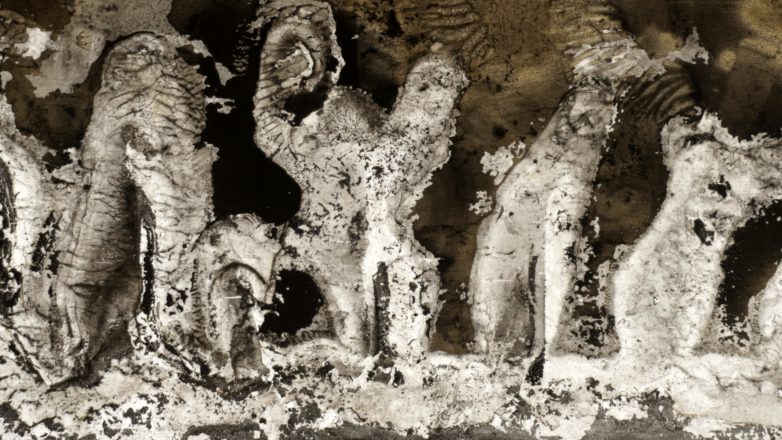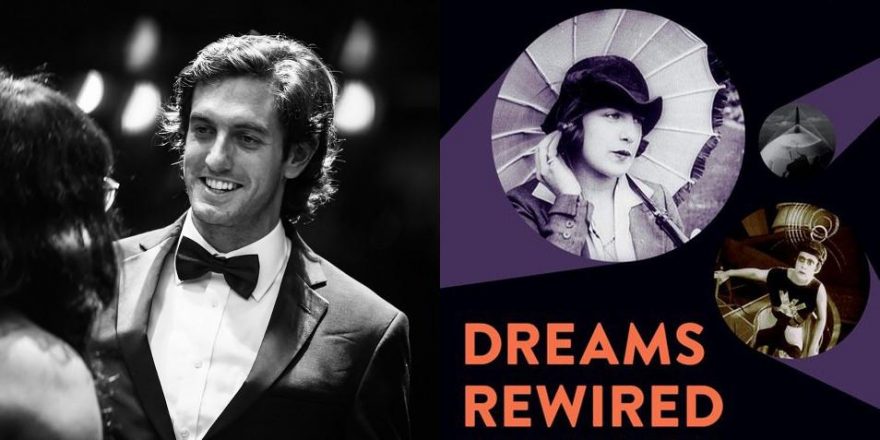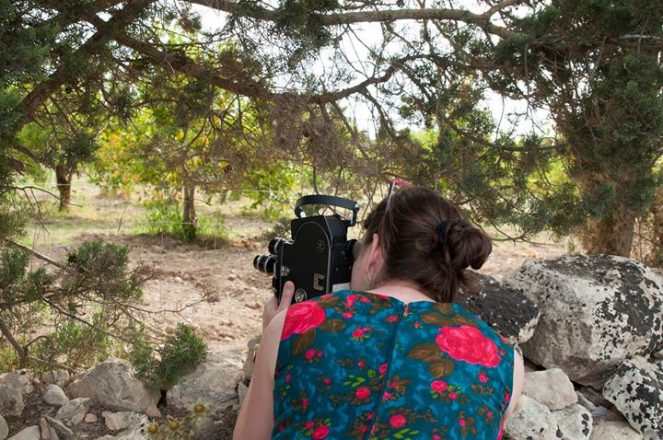I am 23 the first time I really meet my grandmother. It’s 1998, my grandmother has been dead for 20 years, and I’ve recently graduated from college and moved to Romania, where my parents both grew up. I’m in the Romanian SRI archive “study room,” where still-restricted secret police files from Romania’s long authoritarian communist regime are brought out for viewing. These files won’t be open to the general public until a few years later, but, after stubborn weeks of daily phone calls in halting Romanian, faxes and official query letters, I am allowed to visit the study room because I am a family member requesting to view my grandmother’s file.
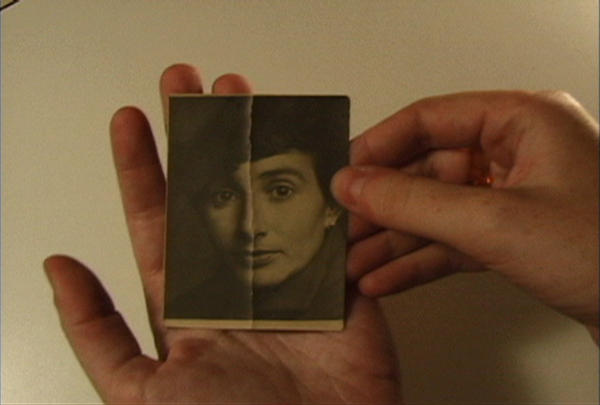
In July 1959, my grandmother was part of an infamous bank heist: with her husband and four other men, my grandmother held up and robbed an armored car carrying over a million lei in state money to a branch of the Romanian national bank. The five men were eventually condemned to death and shot for their “conspiracy to undermine the national economy,” and my grandmother was sentenced to life in prison. My mother was 14 when her mother and stepfather were arrested. My first documentary feature, Reconstruction, tried to make sense of this incomprehensible crime through an intergenerational portrait of trauma and loss in my family – though I’m not sure I knew to use words like “trauma” and “loss” to describe the film while I was working on it.
The SRI compound is at an unmarked, guarded gate in an unmarked alley an hour away by bus from my Bucharest apartment. I’ve been issued a pass with my photograph and a stamp from the Romanian Information Service Military Unit, and I’ve been ushered past a series of hidden gates and checkpoints to an unmarked door in a low-lying concrete barrack with bars on the windows. The study room has two narrow rows of desks where a few other readers hunch over manuscripts with intense concentration. The room is dingy and yellow with a frayed Romanian flag wilting on the peeling back wall, and waiting on a desk for me are 27 bound dossiers in neat piles with names on the covers.
I visit the study room two or three times a week for several months. I sit for hours in the yellow room with the wilted flag and no heating, methodically looking up words in my Romanian-English dictionary, reading interrogation records, forced confessions, informant reports detailing my grandmother’s daily activities and behavior, and page after page of transcripts of everyday conversations recorded in my mother’s childhood home by hidden surveillance microphones. I diligently mark off pages to select my daily xerox request quota – up to 20% of the pages in each volume can be copied. I comb through the text, with its monotonous procedural language, trying to find fleeting spectral glimpses of real people inside of mugshot photos, apartment floorplans and lists of objects seized during house searches: five yellow metal teeth, a book in German called “Heinrich Heine Poet of the Jews,” a refrigerator – I don’t know if it’s electric, a Schaffhausen brand gold watch. At the end of each day in the study room, I often feel like I’m suffocating – the intense accumulation of information both painful and ordinary has, literally, a stunning effect.
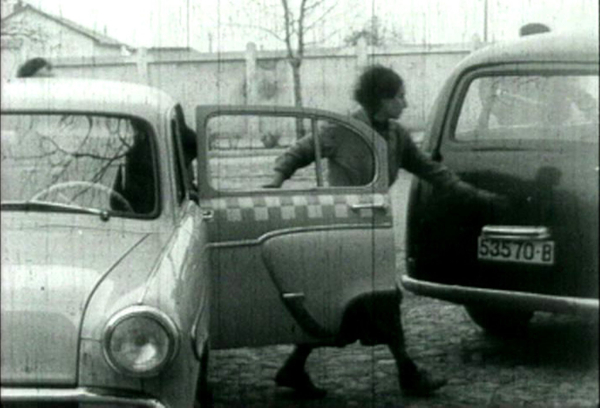
In a bizarre twist to my grandmother’s story, in 1961, Sahia Studio, the official propaganda production company of the Romanian Communist Party, released a feature-length propaganda film called Reconstituirea (or Reconstruction). In this film, my grandmother, her husband and their friends play themselves and re-enact the official version of their crime. They are taken out of their prison cells for film shoots, sometimes on location in their actual homes. One of the weirdest scenes in the film involves one of my grandmother’s friends performing his “depraved” Western lifestyle, listening to contraband “easy listening” lounge music records and sipping a brandy in his own apartment, while strangely still wearing his striped prison uniform shirt.
When I talk about my filmmaking practice and my long relationship to working with archival materials, I usually begin with this moving image fragment that I watched obsessively while working on my Reconstruction. In this black-and-white image from the 1961 Reconstruction propaganda film, my grandmother walks up the stairs to her Bucharest apartment. At the top of the stairs, in front of her apartment door, she is detained by Securitate secret police officers. Her ID is perfunctorily checked, and she is quickly escorted back down the stairs and removed from view, flanked by the Securitate men. When I watch this sequence, I see both an image of Stalinist propaganda and, at the same time, a deeply personal home movie – an intimate record of my family’s past. Like many immigrant families who left their home country in a rush, my family has no home movies and only a handful of family photographs. Here, onscreen, I meet my grandmother in motion for the first time – I see my grandmother’s real gait, her real stairwell, the real door to the house where my mother grew up. And I also see what’s absent from the frame – my 14-year-old mother and my eight-year-old uncle, who watch their mother’s arrest and mark this traumatic moment as one that permanently changes their lives. I witness this moment through their childhood witnessing. I watch this image as a granddaughter and daughter, as a filmmaker, and as a spectator of historical propaganda researching remnants of Romania’s Stalinist past.
Through this image, I learn how to be open in an archive – what to look for, how to read closely, how to find intimate counter-readings against the grain, in the margins and at the edges of the frame. I’ve made three more documentary features since Reconstruction, and each film starts with some kind of archival work, where I build an emotional atlas for what the project will be. Now that I am tuned in to the ghosts that dwell in archives, I find them all the time and they collectively shape my films. I find them in the dozens of historic childbirth education films that I buy on eBay and excavate in libraries that, together, become my archival essay film The Motherhood Archives. I find them in folders of letters to the editor sent from readers all over the U.S. to a feminist magazine in the 1970s – letters that lead me on a journey through cities and small towns all over the country, where I invite strangers to read and respond to the letters for my film Yours in Sisterhood. In my most recent film, Richland, a placemaking portrait of the nuclear company town that made plutonium for the Nagasaki bomb, I find ghosts everywhere – in the geological layers of land surrounding the nuclear site, in library boxes of VHS tapes containing nuclear downwinder testimonies from a 25-year toxic tort lawsuit, in a former nuclear cleanup worker’s oral history collection of her co-workers’ anxiety dreams that becomes the libretto for a community choral performance in a reactor. Filmmaking that starts with archives feels like working as a kind of medium, channeling in a liminal space between past and present. We bring ghosts out of the archive and hold them together.
